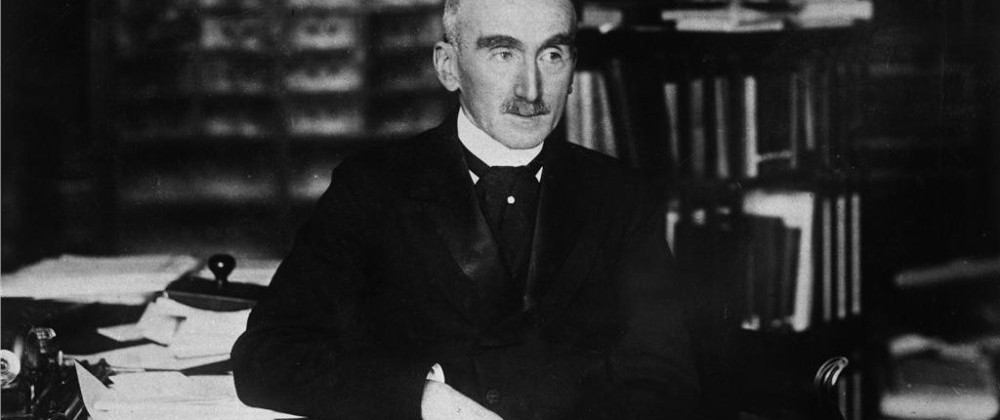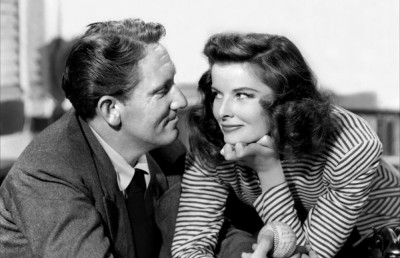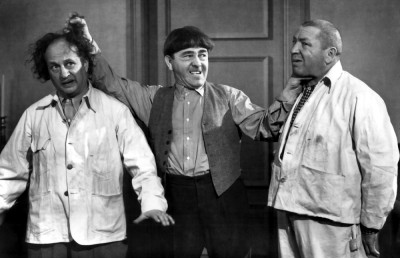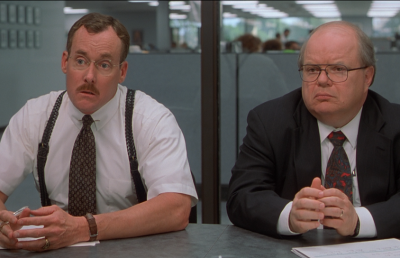Two Minds on Comedy: Arthur Koestler vs. Henri Bergson
Comedy as an act of Creativity

The great Hungarian-British cultural thinker, novelist, philosopher, essayist and journalist Arthur Koestler (1905-1983) wrote provocatively on a whole range of social, political and cultural subjects. In this essay I would like to tackle his wonderfully nuanced exposition, appreciation and critique of Bergson’s comic theory in his overlooked classic, The Act of Creation (1964). Koestler’s critique of Bergson’s groundbreaking work on comedy in his monograph, Le rire (1900) is spread across the first two chapters of his book The Act of Creation, “The Logic of Laughter” and “Laughter and Emotion” (pp. 27-63). The discrepancies between the theories of Henri Bergson and Arthur Koestler can be largely traced to their differing starting points and objectives. Whereas Bergson’s approach to the subject of comedy is sociol¬ogical and philosophical, Koestler’s is physiological and psychological. Bergson sees comedy in social terms (always within a group), Koestler in individual terms (as a complex reflex). As a philosopher, Bergson treats comedy as a living thing, whereas Koestler, who has also written as a philosopher, in this case treats comedy on a more scientific and rational level. Instead of giving us examples of what makes us laugh Koestler explains the physiological pattern of laughter; what happens to us perceptually, biologically, and, to an extent, psycho¬logically when we laugh. To setup my response to Koestler’s critique of Bergson I will begin by outlining Bergson’s theory of comedy (treated in much more depth in my essay on Bergson and Tati in this issue), how his philosophy relates to it, and then Koestler’s own theory.

Bergson sees comedy primarily as a corrective instrument in society. Society requires an elasticity of ¬mind, body, and character to adapt to whatever conse¬quences society may impose. Tension and elasticity are two forces which work together in life to achieve this. Society must guard against an individual who, through the pressures of society, adapts, but only partly. Instead of becoming a vital, living part of society the person becomes prey to “the easy automatism of acquired habits” (Bergson, p.46). Bergson gives as an example the callous professional who lives a life of inelasticity through his rigid posture, business code, and conceit. On the other extreme, a “lack of elasticity” may produce a person with “separatist tendencies” who sways too far from the common good of society. In both cases lack of elasticity is a sign of eccentricity and a threat to society. Since this threat to society is not material, society cannot counter with material repression. Instead it counters with laughter, a social gesture. Laughter restrains eccentricity and becomes a means of achieving utilitarian improvement. This is what Bergson envisions as the purpose of comedy. To better understand his theory of comedy it is necessary to touch upon his philosophy, since his theory of comedy is a product of it. The philosophy of Mechanism states that all reality can be explained by mechanical/materialistic principles. Nature is more a machine than a living organism because it is a whole whose sole function is served automatically by its machine-like parts (Runes, ed., p. 194). Bergson devoted the better part of his philosophy countering Mechanism with his own form of Vitalism. Vitalism is a philosophy which believes that life is controlled by its own laws and not those of physics and chemistry. Physics and chemistry cannot explain life because life is not simply material. Physico-chemical laws are restricted by their mechanistic principles, therefore life, which is independent of the physico-chemical laws, cannot be understood by logical/ scientific means. Consequently the vitalist gives to life an original life force.

To Bergson this force is a vital impulse (élan vital) understood as life or consciousness and grasped only by man’s intuition. Where the intellect can apprehend only static truths, the intuition can understand the life process itself (Sahakian, p. 233). To Bergson life is continually pushing, growing, and moving, both on an individual and evolutionary level. [1] Life is a vitality, a spontaneous exchange of encountering new things and reacting; life should always strive toward the elimination of repetition. Whenever a human being stops being “alive” and resembles an automaton he falls prey to humor and ridicule (Sypher, p. xi). In his metaphysics Bergson states that matter is machine-like and mind/consciousness a creative force (Bentley, p.134). His theory of what is comical, encapsulated in the phrase “the mechanical encrusted upon the living,” is an extrapolation of his metaphysics.
Bergson begins by saying that the supple soul animates matter, but matter is machine-like, and instead of renewing its vitality dulls the body into mere automatism. He takes this imposition of inert matter on supple soul and transposes it to other human gestures and movements: the body which imposes itself on the soul (a variation of matter on soul); the rigid clothing which imposes itself on the living body; and cumbersome ceremonies which impose themselves on the social body. To this list he adds actions and situations which concurrently render the illusion of life and the impression of a mechanical process (the Jack-in-the-Box, the Dancing-Jack, the Snow-Ball) and processes which counter life’s transient nature (repetition, inversion, reciprocal interference of series).
Koestler approaches comedy from a different angle. He sees laughter as a reflex action which functions as an outlet for nervous energy. He analyzes this reflex physiologically and psychologically and believes that all humor is triggered by aggressive emotions which can be traced to man’s early stages of evolution. In primitive times these “aggressive-defensive or self-asserting” tensions were dissipated in violent action. As life became civilized the need for violent action diminished and was replaced by laughter. Although Koestler agrees with this psychological/biological theory of laughter as a venting reflex he also sees limitations in it. He thinks there is a paradox in calling laughter a reflex because it is so much more complex than most reflexes. For example, unlike the knee-jerk reflex, the stimulus and response of a laugh is not on the same physiological level, except when the laughter is physically induced (as in being tickled).
Koestler eases this paradox by categorizing humor as part of the complex creative domain. Koestler designs a triptych (see figures 1, 1b) which stands for all creative patterns, whether they be comical (Humor), scientific (Discovery), or artistic (Art): the jester, the sage, and the artist. He believes that all three minds employ a specific mode of thought to arrive at their results. All creative activity is similar, “it consists in the discovery of hidden similarities” (Koestler, p.27). Koestler refers to this process of creativity, the proverbial “light bulb” above the head, or ‘multiplane’ thinking, where the mind performs lateral thinking, as “biosociation” (Koestler, 1978, pp. 112-113). Whereas most routine thinking occurs on a single plane of thought, creative thinking ‘biosociates’ on different planes and frames of reference. What modulates the end result where the fields of creativity are concerned, comedy, science, or art, is the person’s emotional climate. As you move left to right on the triptych the emotions sway from aggressive (Humor), to emotionally detached/neutral (Discovery), to sympathetic and admiring (Art). To explain this “common denominator” present in every creative thought process Koestler posits the terms bisociate, matrix, and code.


figs. 1, 1b
Bisociation describes the difference between one plane and two plane thinking. Routine activity is done on a single plane, but when working on two planes the balance of both emotion and thought is disturbed and the mind is fused into a creative thought. These planes of thinking are the matrices. A matrix is “any ability, habit, or skill, any pattern of ordered behaviour governed by a ‘code’ of fixed rules” (Koestler, p.33). The codes, which may be innate or acquired by learning, are simply the rules by which the matrix must abide; in chess the rules of the game are the codes and all the possible moves are the matrices. The code is the invariable, while the matrix is the variable. Matrices can vary in flexibility from reflexes and skills which have become automatized through habit and which allow little strategic choice, to those of almost unlimited choice. The codes can function on a conscious level (the rules of a game) or on an unconscious level (the codes regulating a physical action like skating or riding a bike). These codes which function unconsciously are called “hidden persuaders.” Thinking restricted to a single matrix can only produce routine skills/tasks and those which, through habit, have become second nature. It cannot produce a creative or original thought. Any function which is continually repeated under the same circumstances become monotonous and automatized. There are two ways of escaping this rut. One is to sink into dream or dream-like states, and the other is to bisociate and connect on two independent matrices. An important element in Koestler’s theory is that all creative activity is governed by the same principles and the result of the process is determined by the emotional climate:
The bisociate patterns found in any domain of creative activity are tri-valent: that is to say, the same pair of matrices can produce comic, tragic, or intellectually challenging effects (Koestler, p.45).
The diametrically opposed role which emotion plays in the respective theories of Koestler and Bergson is a large factor behind Koestler’s criticism of Bergson’s theory. Koestler’s criticism of Bergson’s theory is two-fold. Firstly, he objects to Bergson’s intention that it serve as an explanation for all comic forms, and secondly, the theory itself. Koestler refutes the theory by juxtaposing it with his own. According to the logical pattern involved in the bisociated thought process any comical incident can be converted to an intellectual, or to an artistic/tragic experience by a change of emotional climate. A fat man slipping on a patch of ice may induce laughter from the callous schoolboy, sympathy from the old lady, or concern from the physician. Don Quixote may move from a comic to a puzzling figure if one becomes interested in him as a psychological case, and on to a tragic figure if the emotionally distanced curiosity transforms into sympathetic identification. The whole notion of the “mechanical encrusted upon the living” is susceptible to change according to the character of emotions involved. Koestler cleverly supports this argument by moving Bergson’s examples along the triptych. The man-machine (homme-automate) analogy becomes lyrical in the case of Galatea, the ivory statue which Pygmalion made and Aphrodite brought to life. It has its tragic counterpart in the legend of Faust’s Homunculus, the Golem of Prague, and the Frankenstein monster.
Bergson’s comic puppet play (Koestler mistakenly refers to it as the Punch and Judy example, whereas Bergson actually has it under the Dancing-Jack example) is transposed to art (the theatrical marionette), to science (the anatomical models in medical schools), and further still on a metaphorical level —the puppet on strings as a symbol of comic or tragic fate and in the intellectual realm, as a philosophical dilemma of free will and moral responsibility on the one hand and the strings of determinism, religious or scientific, on the other. The Jack-in-the-Box example is connected to the indestructibility of life: the monster who grows a new head or tentacle, and to the biological sciences: the muscle-twitch, the epileptic fit, etc. Koestler’s arguments become less convincing when he takes on a satirical tone and tries to ridicule Bergson’s examples. He says that “if rigidity contrasted with organic suppleness were laughable in itself, Egyptian statues and Byzantine mosaics would be the best jokes ever invented” (Koestler, p.47). His argument misses the point because, above all, Bergson says that humor is strictly human. Bergson states that there is laughter when there is a “momentary transformation of a person into a thing…” (p.97). A statue is or never was, human.
Using Bergson’s criteria of automatic repetitiveness as a comic element Koestler says that an epileptic fit would be funny. By stretching Bergson’s criteria an epileptic fit could belong to the comic domain: “A deformity that may become comic is a deformity that a normally built person could successfully imitate” (p.75). Regardless, I still believe that Bergson would find a way to refute Koestler’s transposition of an epileptic fit into the comic domain. Morally it would be reprehensible to laugh at an epileptic fit, and more importantly, laughing at it would serve no social-corrective function. Physically an epileptic fit looks too jerky, uncontrolled, and unpredictable to be mechanical. Koestler says that the monotonous tick-tack of a pulse or heart-beat would, according to Bergson’s theory, produce laughter. This attempt at jocularity is easily disproved because Bergson never uses a comic example which is based solely on the hearing senses; all his examples are either physical, visual, verbal, or situational. Koestler tries to disprove Bergson’s comic formulation “we laugh each time a person gives us the impression of being a thing” by saying that if it were true then there would be nothing funnier than a corpse. This too is problematic. What Bergson meant by “thing” was something mechanical, like a cannonball, or the appearance of something mechanical (the workers in Metropolis or Chaplin in Modern Times), or, in the least, something other than human. When a person becomes a corpse he does not become “something” else, but remains a shell of his former self. He does not become another “thing,” but the same thing devoid of life.
Strangely enough, although Koestler criticizes Bergson’s theory there are enough similarities and connections between their theories to suggest that Koestler admires Bergson’s theory and was partly influenced by it (and his philosophy). Here are a few indications. In Bergson’s philosophy intuition is the means by which the life process is understood. What is this intuition? Bergson describes it as “the kind of intellectual sympathy by which one places oneself within an object in order to coincide with what is unique in it and consequently inexpressible” (Randall, Jr. and Buchler, p.108). Authors Randall, Jr. and Buchler paraphrase Bergson to further clarify his concept of intuition:
Bergson says that what he calls intuition is nothing mysterious but a faculty which we all at some time have exercised, as when we have grasped, in an illuminating moment, the meaning of a poem or the essence of a character in a novel (p.109).
This “illuminating moment” is identical to the Koestlerian moment when the bisociating on two independent matrices results in an “explosion” or “catharsis” —when the creative process is consummated. (see figure 2) Bergson’s intuition becomes Koestler*s catharsis/explosion. What Bergson arrives at philosophically Koestler arrives at physiologically. In his theory of comedy Bergson says that a person who lacks elasticity of mind, body, and character will not be a vital and creative member of society. The Bergsonian character who lacks elasticity becomes the Koestlerian character who functions on only one matrix. Koestler relates a Freudian joke (pp.32-33) and says that it functions because it is “the perceiving of a situation or idea, L, in two self-consistent but habitually incompatible frames of reference, M1, and M2 (p. 35) (see figure 3) This idea is directly lifted from Bergson’s reciprocal interference series, which states that:

fig. 2

fig. 3
A situation is invariably comic when it belongs simultaneously to two altogether independent series of events and is capable of being interpreted in two entirely different meanings at the same time (p.123).
In light of Bergson the philosopher, his theory of comedy can be seen as a plea for the freedom of individual creativity. In a similar sense, so too is Koestler’s theory of comedy. For Koestler laughter is a complex reflex which is a part of the whole domain of creativity. This creative activity gives humanity the ability to function on a higher level of thought. To quote Koestler:
The creative act, by connecting previously unrelated dimensions of experience, enables him to attain to a higher level of mental evolution. It is an act of liberation —the defeat of habit by originality (p.96).
Bergson and Koestler arrive at the same point –the negation of stagnancy– through varying means.
The complex deviation which Koestler makes from Bergson’s sociological/philosophical theory of comedy is his inclusion of comedy as part of the creative domain. In the opening chapter of his essay Bergson says that since the comic spirit has a logic of its own he will treat it as a living thing. Having said that he asks the questions “Can it then fail to throw light for us on the way that human imagination works, and more particularly social, collective, and popular imagination?” (p.62). It would appear that what Bergson asked in 1900 Koestler answered in 1964.
Endnotes
1 In his book Creative Evolution Bergson refutes the mechanistic evolutionary theories of Darwin and Spencer in favor of his own Vitalistic evolutionary theory which states that the evolution of the universe is due to the driving force of the élan vital (Durant, pp.440 & 465).
BIBLIOGRAPHY
Bentley, J. E. Philosophy: An Outline History. Totowa, New Jersey: Littlefield, Adams and Co., 1966.
Bergson, Henri. Laughter. In W. Sypher (Introd. & App.) Comedy. New York: Doubleday Anchor Books, 1956, 61-190.
Durant, W. The Story of Philosophy. New York: j Pocket Books, 1953.
Feibleman, J. K. “Mechanism.” In D. D. Runes (Ed.) Dictionary of Philosophy. Paterson, New Jersey: Littlefield, Adams and Co., 1962, 194.
Koestler, A. The Act of Creation. New York: The MacMillan Company, 1964.
Koestler, Arthur. “Humour and Wit.” Janus: Summing Up. London: Pan Books, 1978, 109-138, 328.
Randall, J. H., Jr., and J. Buchler. Philosophy: An Introduction. New York: Barnes and Noble, Inc., 1942.
Sahakian, W. S. History of Philosophy. New York: Barnes and Noble, Inc., 1968.
Sypher, W. Introd. to Comedy. New York: Doubleday Anchor Books, 1956.




_400_258_90_s_c1.jpg)









